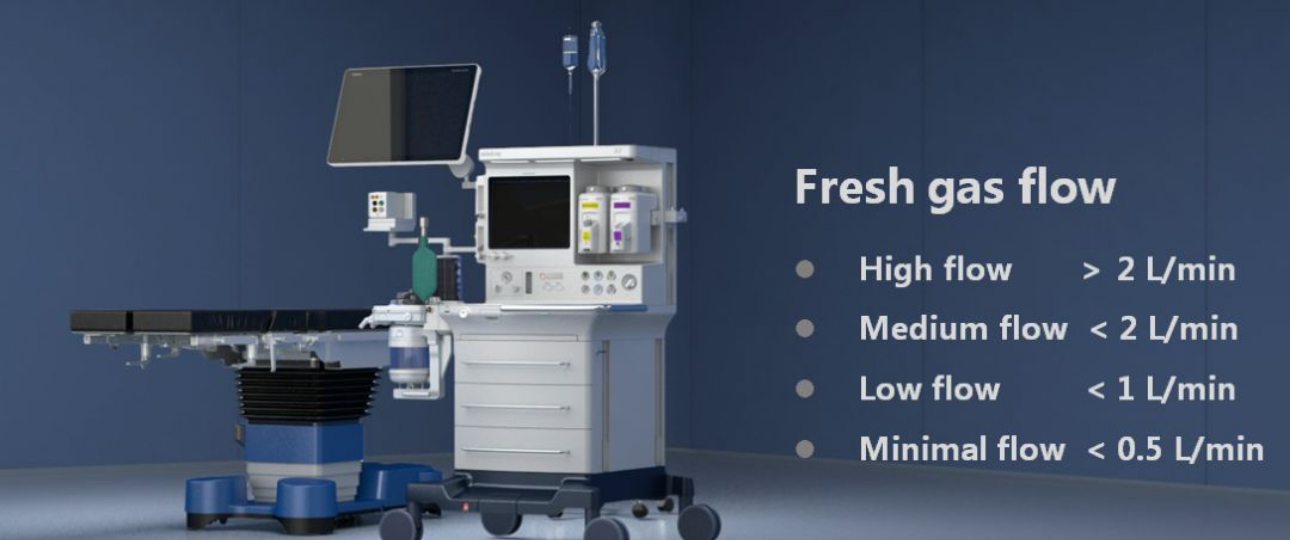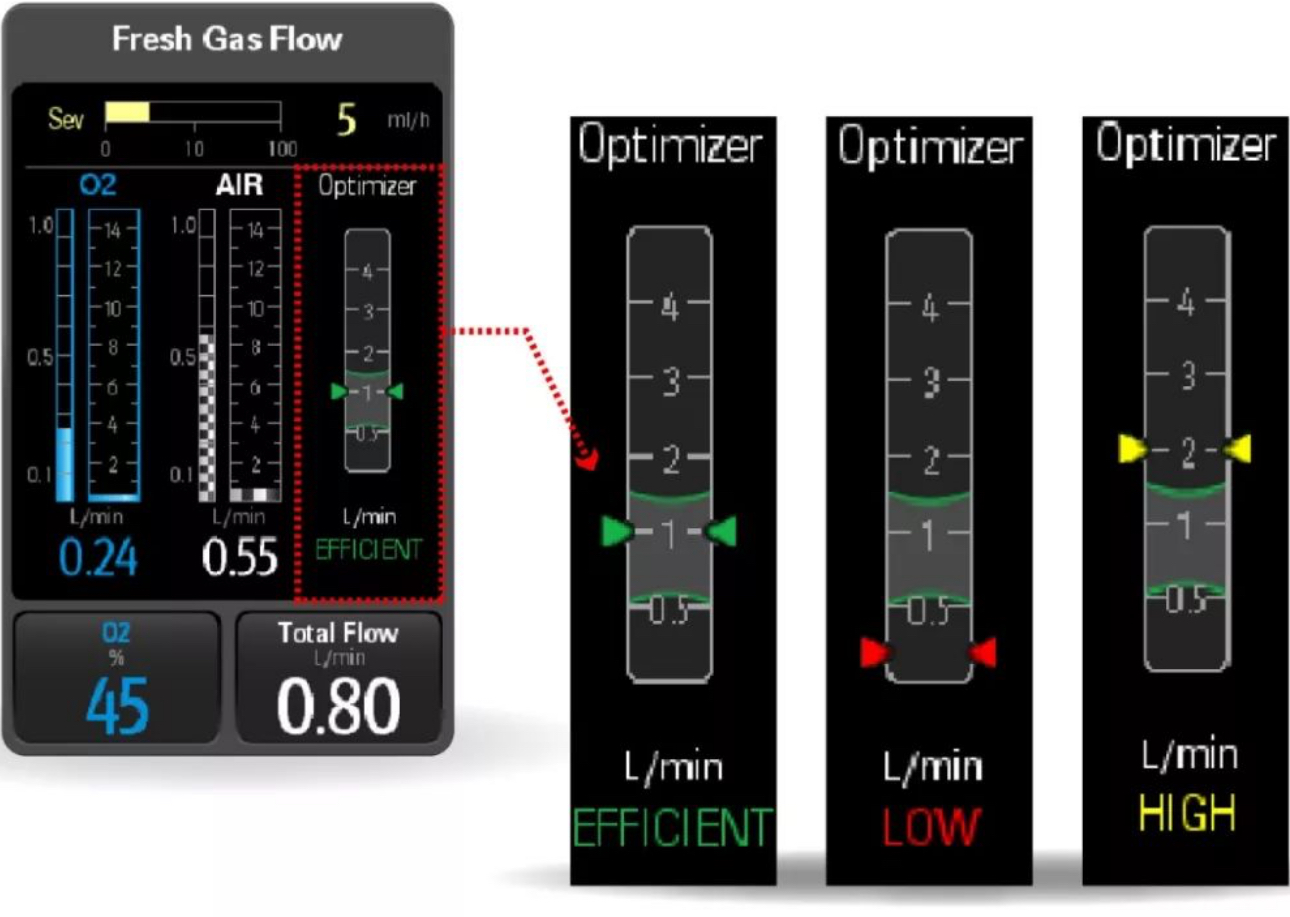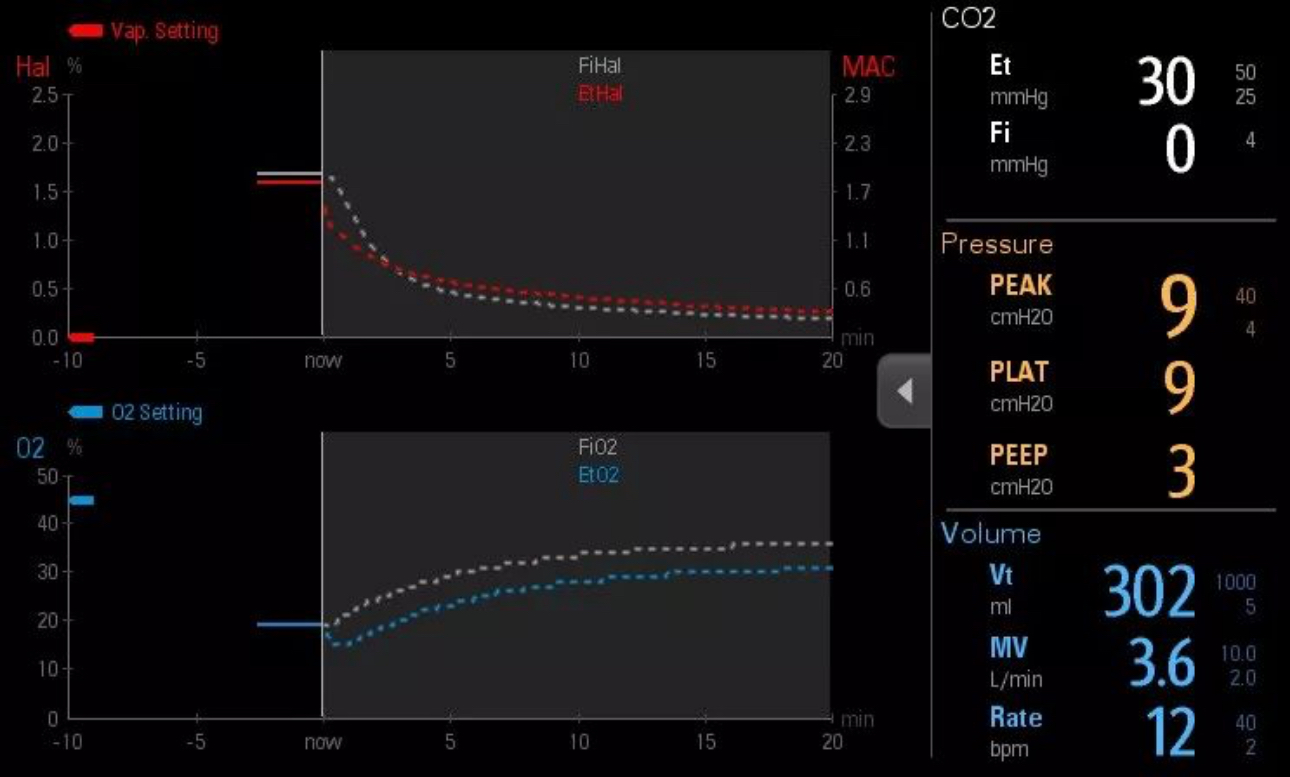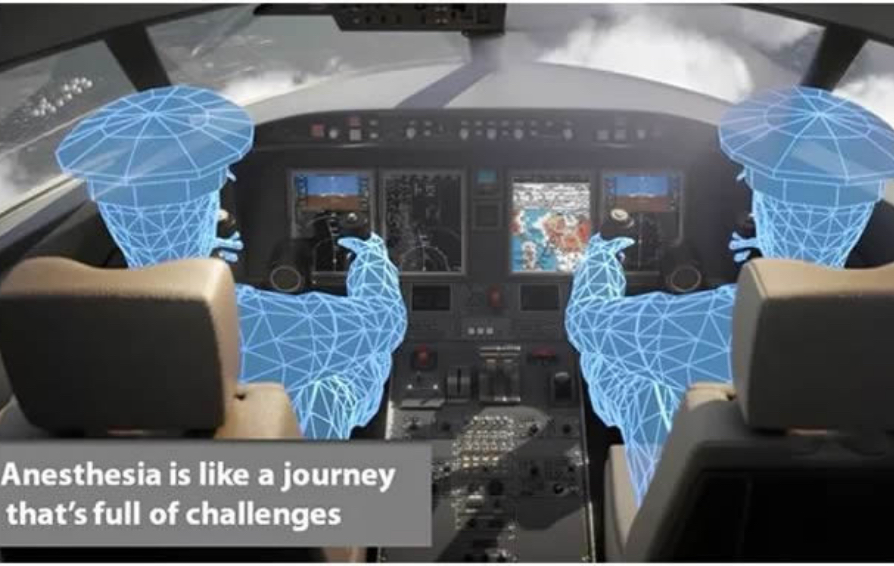Flying an airplane is an often-used metaphor for performing anesthesia, for the pilot, with his accurate control of the sophisticated control panel, aims to take passengers to their destinations safely and comfortably. Likewise, safe anesthesia necessitates accuracy, as any mistake can be fatal.
There are plenty of modern monitoring technologies to help observe patient status and guide anesthesia. But patient conditions vary case by case, posing a continuing question to clinicians:
How do we adapt anesthesia to each patient's need?
Low flow anesthesia (≤1L/min) is often recommended in clinical practice, as it reduces anesthetic consumption and pollution, and protects patients from the negative effect of cold and dry anesthetic gases.

However, low flow anesthesia is not used universally as yet, primarily because it is demanding for clinicians to accurately control the proper level of low flow to maintain sufficient oxygen for each patient, given that the oxygen consumption of different patients can differ widely.
The incidence rate of intra-operative awareness during general anesthesia is reported as 0.13% in the US. Problems like these are difficult to tackle merely with experience, but can be easily addressed if all the parameters can be visualized.
Mindray integrates a series of state-of-the-art medical technologies into our anesthesia and patient monitoring devices to visualize patient's anesthetic status and physiological status during the entire peri-operation. These smart functions are dedicated to helping anesthetists easily predict, identify and intervene in safety risks of patients.
What is the suitable flow rate of fresh gas?
The innovative Optimizer, an electronic fresh gas flow indicator in Mindray's A7 and WATO EX-65 Pro anesthesia workstations, can indicate the recommended real-time fresh gas flow setting against current setting value, based on accurate monitoring and algorithms.
It enables a safe low flow required by different patients in different conditions, and minimizes the waste of medical gases to balance between patient safety and medical care cost.

I'd like to predict further ahead.
Low flow anesthesia usually results in longer response times. Anesthetists have to wait for a few minutes before they can see the change of a patient's physiological status after the setting of vaporizer is modified.
Mindray provides the AA Prediction feature, allowing caregivers to predict the status of anesthetic agents (AA) and O2 concentration, including FiAA, EtAA, FiO2 and EtO2, for the next 20 minutes. It makes anesthetists more confident in adjusting anesthetic agents to maintain a proper level of anesthesia depth for individual patient need.

Reaching a Balance of Anesthesia (BoA)
To help anesthetists better monitor a patient's real-time anesthesia status, Mindray's A7 anesthesia workstation can be linked to the BeneVision N Series, our flagship patient monitoring range, enabling anesthetic parameters to be displayed on the monitor in a clear and intelligible way.

The BoA Dashboard, one of the intelligent clinical assistive applications in the BeneVision N Series patient monitors, is designed to provide well-arranged monitoring information from the induction of anesthesia, through maintenance to recovery.
Importantly, the BoA Dashboard has an anesthesia status indicator to reflect the interaction and interplay among patients' analgesia, sedation and paralysis status in graphics.
Visualization of patient status is helpful to improve patient safety and clinical efficiency. With the graphic display to simplify complex monitoring data, anesthetists are able to apply anesthetic agents properly, take early actions to prevent abnormal incidents, and determine the best timing for intubation and extubation with confidence.
---------------------------
[1] Sebel, P. S., et al. "The incidence of awareness during anesthesia: a multicenter United States study." Anesthesia and analgesia 99.3 (2004): 833.

